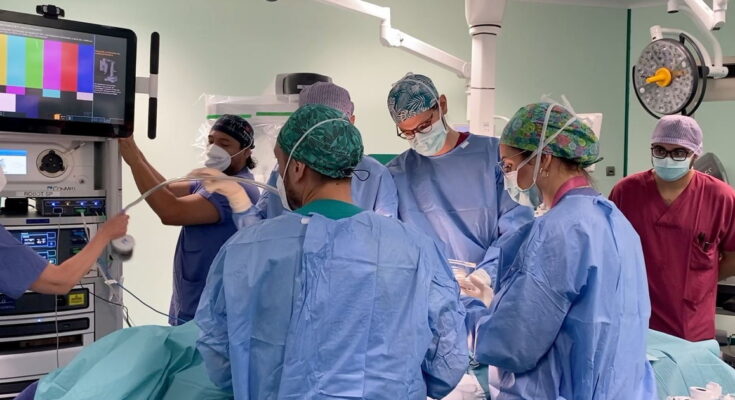MILAN (ITALPRESS) – The Urology Unit of the IRCCS San Raffaele Hospital in Milan is recognized as an international center of excellence for the diagnosis and treatment of major oncological and functional pathologies of the genitourinary system. With more than 3,500 operations for kidney cancer and more than 2,000 operations for bladder cancer, the Unit stands out for its surgical experience and use of state-of-the-art technology, such as the latest generation Da Vinci Xi robotic system. More than 700 robotic surgeries and more than 20,000 outpatient services are performed annually, with a multidisciplinary approach that integrates clinical activities, research and academic training. Collaboration with the Urological Research Institute (URI) allows the development of innovative therapies and the study of new therapeutic strategies, confirming the role of San Raffaele Hospital as a reference point for patients from all over Italy and abroad.
“A major innovation in the treatment of kidney cancer – Francesco Montorsi, head of Urology at IRCCS San Raffaele Hospital and professor of Urology at Vita-Salute San Raffaele University of Milan, explained to Italpress – is to take into account that not all tumors are the same. Based on the characteristics of the neoplasm, tumors can be cured: by piercing them with a needle and cauterizing them; using a new form of robotic surgery, the so-called “single port”, which with a single cut allows selective removal of the lesion; or it is possible to treat it using a form of radiotherapy The new technology is called stereotaxic, a highly precise technique that uses high-intensity radiation beams to specifically target tumors while sparing the surrounding healthy tissue as much as possible.
Innovation, for the Head of Urology, is to work in a team, in a multidisciplinary manner, combining the advantages of oncologists, physicians and radiotherapists, with whom each case of urological tumors is discussed, with special attention to cases of urological tumors. In the early stages of the disease, we intervene using highly innovative drugs, thereby drastically reducing the risk. If the neoplasm is very aggressive, the approach used is a combination of several new immunotherapy or chemotherapy drugs and possibly surgery and radiotherapy. For Prof Montorsi “the union of forces is a major innovation for this type of tumor”.
Lastly, the professor highlighted how minimally invasive surgery has significantly changed patients’ lives. In the past, this surgery was effective, but also very invasive: the incision was large and recovery took up to a month before returning to normal life and work.
But today, thanks to new techniques, interventions can be performed with increasingly complex approaches: from single-port techniques, which use one small access to perform the operation, to multi-port techniques, which involve four or six microincisions. The patient “barely notices it” – says the Chief Doctor – and, at the same time, the method allows the surgeon to be extremely precise, respecting the surrounding tissues and organs”. As the expert underlines, this is “a big step forward”. A commitment to clinical research is also fundamental, which at San Raffaele is addressed “right at the patient’s bedside”: every small advance is immediately implemented in practice, to improve the quality of medical and surgical care.
-photo of IRCCS San Raffaele Hospital –
(ITALPRES).



